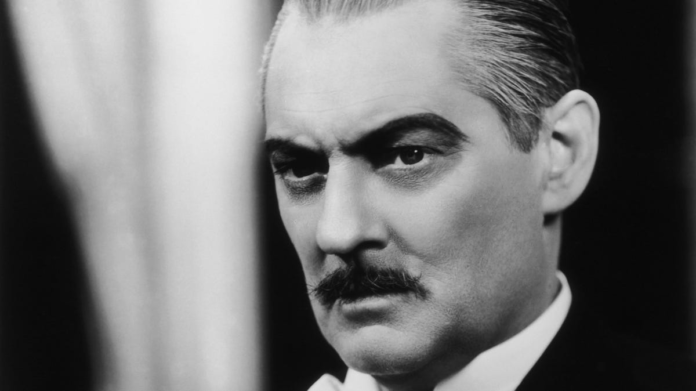Under a warm summer sky in 1947 at the Butler Bowl, the glitz of Hollywood rubbed off on Indiana’s pastoral state song. Music Director Fabien Sevitzky and the Indianapolis Summer Symphony Orchestra performed a theme and variations on „On the Banks of the Wabash,“ arranged by a musician who, just the year before, had starred as the avaricious Mr. Potter in „It’s a Wonderful Life.“
To most of the world, Lionel Barrymore was a standout actor from a family of famous thespians, known for his interpretations of memorable characters in movies like „You Can’t Take It With You“ and „A Free Soul,“ for which he won an Oscar. To Indianapolis, Barrymore was also a composer whose newest works they often heard live, thanks to his friendship with Sevitzky.
Generous applause met the July 30, 1947, premiere of the piece that drew on the beloved tune by Paul Dresser. An Indianapolis News editorial noted that a few musical turns flirted with a hoedown or jig more reminiscent of the „Swanee“ before the mood returned to the Wabash River. Nonetheless, the opinion concluded with praise.
„If there were any official manner whereby Hoosier citizenship of the honorary variety could be conferred upon Mr. Barrymore, he would merit the distinction,“ the Aug. 2, 1947, editorial proclaimed.
Barrymore’s path to Hoosier admiration began when his friend Marian MacDowell, the wife of American composer Edward MacDowell, suggested the actor orchestrate four of her husband’s „Sea Pieces“ piano works. A longtime music fan, Barrymore pursued composing in his spare time. Pleased with his finished result, Marian encouraged him to send the work to Sevitzky, according to the actor’s autobiography, „We Barrymores.“
By that time, the Indianapolis Symphony’s second music director — known for his exacting standards and „sweeping cape“ — had built the ensemble into one that regularly recorded and broadcasted performances, according to Thomas Akins‘ book „Crescendo,“ which chronicles the first 75 years of the orchestra’s history. Further linking the two men was Sevitzky’s own background as a silent film actor in his native Russia, said Frederick Fellers, a retired Indianapolis librarian who has researched the orchestra.
Barrymore and Sevitzky began to correspond via phone calls and letters, often discussing the nuts and bolts of the actor’s new compositions. In the 1940s, the Indianapolis Symphony regularly performed Barrymore pieces like the 18th-century-influenced „Preludium and Fugue,“ which Circle City newspapers described as soothing and accessible. Hoosiers liked his compositions enough to vote one onto an all-request concert in 1945.
„Fabien Sevitzky — he was known for conducting the works of American composers, more than almost any other conductor in the country,“ Fellers said.
Although Barrymore heard a few orchestral performances of his works live, according to his autobiography, it is unclear whether he ever saw the Indianapolis Symphony play them. The actor died at age 76 in 1954, the year before Sevitzky was ousted from his Indianapolis post after disagreements with the ensemble’s board and supporters.
A feud over Indiana’s beloved song: Why authors of ‚Back Home Again‘ were accused of stealing from another iconic Hoosier song
Actor and music director did eventually meet, the former noted in „We Barrymores.“ By that time, their friendship had already been cemented, as Barrymore wrote in a public dedication of his „Partita“ to Sevitzky, who died at age 73 in 1967, for a March 1944 performance.
„We don’t know each other and yet we are good friends,“ Barrymore penned, according to the Indianapolis Star. „He sees me one day on the screen and I listen the next day to his recordings and we understand each other.“
Looking for things to do? Our newsletter has the best concerts, art, shows and more — and the stories behind them
Contact IndyStar reporter Domenica Bongiovanni at 317-444-7339 or d.bongiovanni@indystar.com. Follow her on Facebook, Instagram or Twitter: @domenicareports.
Retro Indy: Indy Symphony premiered music by Hollywood star Barrymore – IndyStar
RELATED ARTICLES
